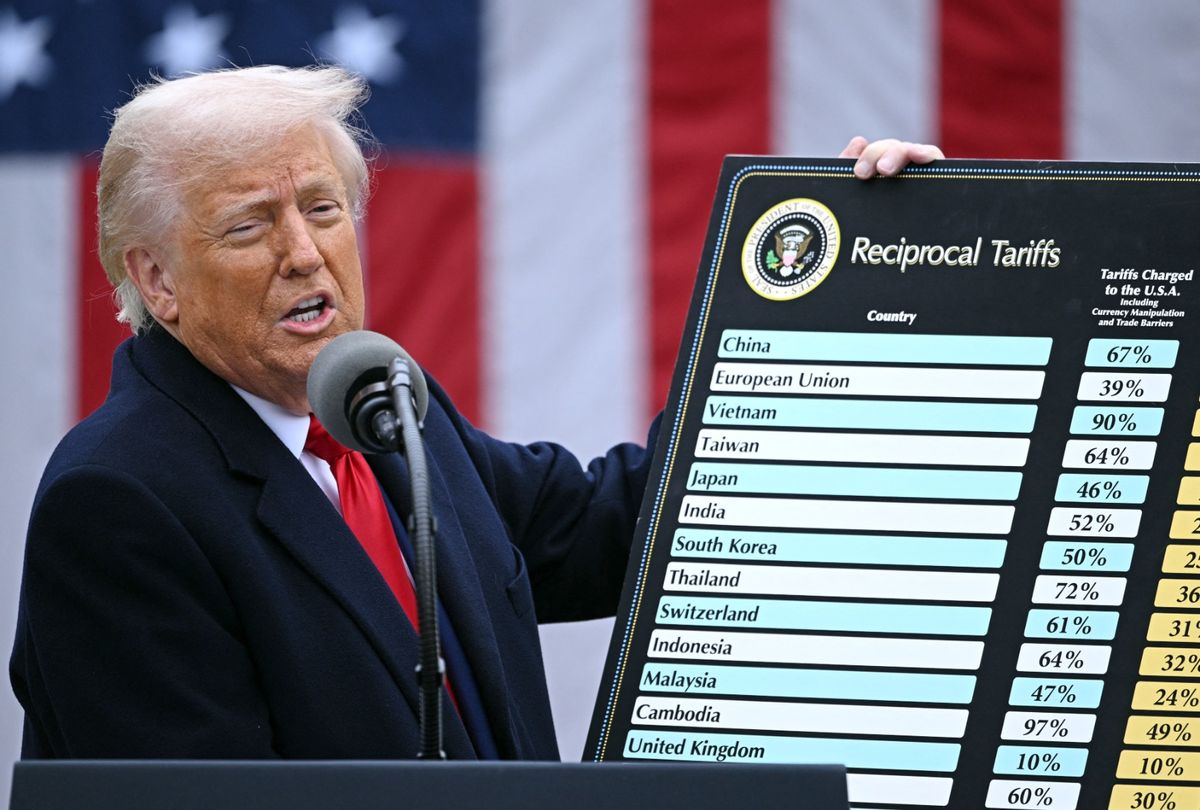April 2 marked what President Donald Trump and his administration described as "Liberation Day," or the announcement of sweeping “reciprocal” tariffs on almost every country, ranging from a base rate of 10% to as high as 50%.
Trump claims that the proposed duties were direct responses to “tariffs, non-monetary barriers and other forms of cheating” that other countries have enacted against the United States — per CBS News — but that’s not quite accurate. Instead, the “reciprocal tariffs” are based on the U.S.’s trade deficits with each country.
Specifically, the formula that the Trump administration used to calculate tariffs for each country was as follows: the U.S. trade deficit with the country, divided by the country’s exports to the US, halved.
What does that mean? A trade deficit occurs when the U.S. imports more from a country than it exports to said country. For example, the U.S. imports a significant amount of computer chips and semiconductors from Taiwan, but doesn’t export any product in particular to the island — resulting in a $74 billion trade deficit with Taiwan. This deficit is not caused by any tariff or currency manipulation but is the natural result of global trade.
The same logic applies to China, one of the major exporters to the US. In 2024, the U.S. imported $439.9 billion worth of goods from China, according to CNN, and had a $295.4 billion trade deficit with China. Dividing the deficit over the value of Chinese imports gives roughly 67%. Halving that, we get 34%, which was the tariff on China listed in Trump’s reciprocal tariff table.
“Knowing how these rates were calculated highlights that they are generally going to be most severe on the nations that U.S. companies rely heavily upon in their supply chain,” Mike O’Rourke, chief marketing strategist at Jones Trading, said in a note to investors Wednesday. “It is hard to imagine how these tariffs would not wreak havoc upon the profit margins of major multinational corporations.”
Economists were stunned at the Trump administration's math.
"It’s now clear that the [Trump] Administration computed reciprocal tariffs without using tariff data," wrote former Treasury Secretary Lawrence Summers. "This is to economics what creationism is to biology, astrology is to astronomy, or RFK thought is to vaccine science. The Trump tariff policy makes little sense EVEN if you believe in protectionist mercantilist economics."
"This is *bananas* The White House 'reciprocal' tariff bears no relation to actual tariff barriers. It's equal to half of the trade deficit (as a share of imports)," wrote economist Justin Wolfers. "This is indescribably crazy."



Shares